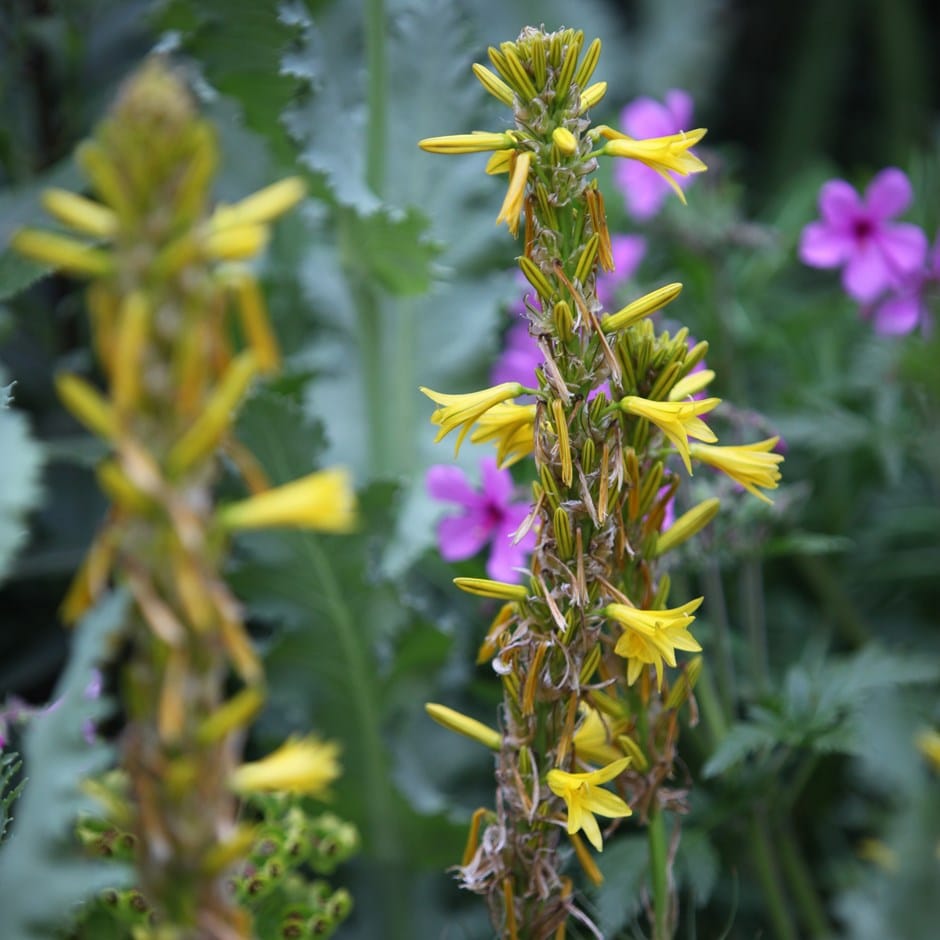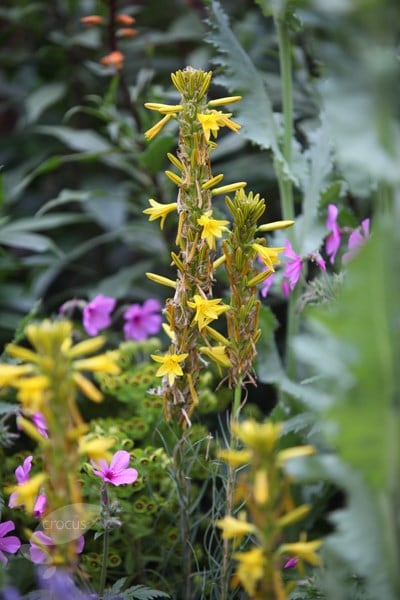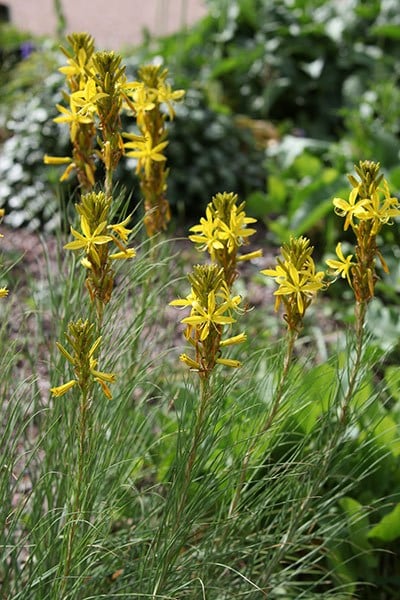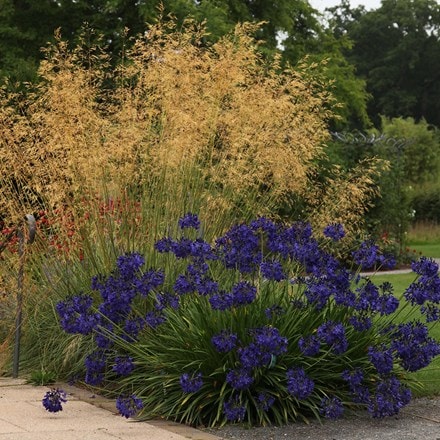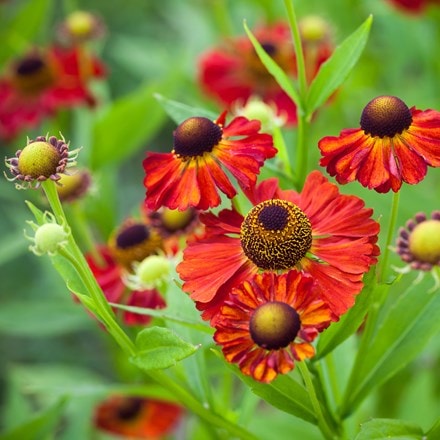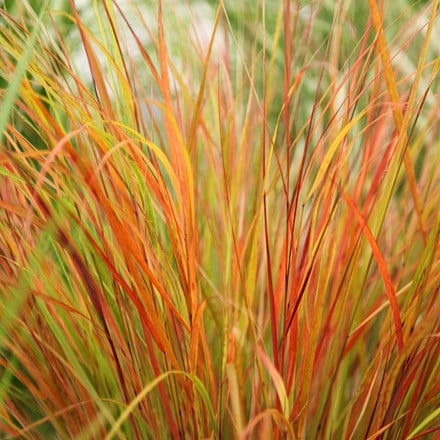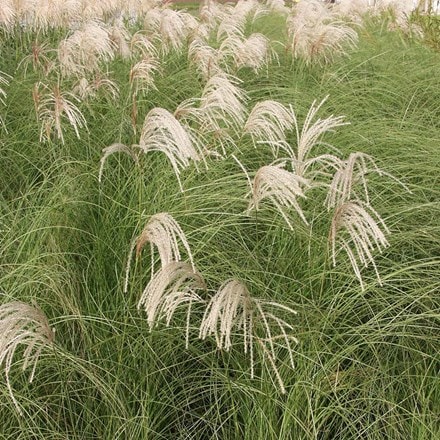Asphodeline liburnica
Jacob's rod
- 9cm pot
- £12.99
- In stock (shipped within 2-3 working days)
- 3 × 9cm pots
- £29.99 £10.00 each
- In stock (shipped within 2-3 working days)
Delivery options
- Standard £5.99
- Position: full sun
- Soil: any well drained soil
- Rate of growth: average
- Flowering period: June to July
- Hardiness: fully hardy
An easy to grow perennial that has great architectural form, Asphodeline liburnica is perfect for incorporating into gravel gardens or meadow style planting schemes.
The narrow, bluish-green, grass-like foliage forms clumps from which leafy stems arise in early summer bearing dense spikes of pale yellow, star-shaped flowers. The overall impression is distinctly upright, so it is good for adding vertical interest.
Natives of Austria, Italy and the eastern Mediterranean, where they flourish in sunny, dry meadows.
The narrow, bluish-green, grass-like foliage forms clumps from which leafy stems arise in early summer bearing dense spikes of pale yellow, star-shaped flowers. The overall impression is distinctly upright, so it is good for adding vertical interest.
Natives of Austria, Italy and the eastern Mediterranean, where they flourish in sunny, dry meadows.
Asphodeline grows best in well-drained soil and full sun, making it ideal for borders, gravel gardens, or sunny slopes.
Avoid waterlogged areas as it dislikes sitting in damp soil, especially over winter. In heavier clay soils, mix in plenty of grit or sharp sand along with organic matter like compost to improve structure and drainage.
Once established, it becomes drought-tolerant and needs minimal watering, making it a good low-maintenance choice. Cut back faded flower stems after flowering to keep the plant tidy and encourage more blooms the following year.
Avoid waterlogged areas as it dislikes sitting in damp soil, especially over winter. In heavier clay soils, mix in plenty of grit or sharp sand along with organic matter like compost to improve structure and drainage.
Once established, it becomes drought-tolerant and needs minimal watering, making it a good low-maintenance choice. Cut back faded flower stems after flowering to keep the plant tidy and encourage more blooms the following year.
